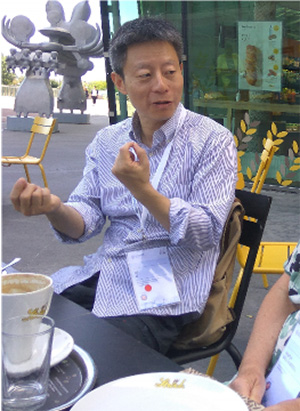USTC Astronomy Seminar Series: 2018 Fall
The Commensal Radio Astronomy FAST Survey (CRAFTS)
李菂 研究员
国家天文台
2018/10/23, 4:00pm , the 19th-floor Observatory Hall

Radio telescopes sample the phase and amplitude of EM waves in time. The raw data will then be down-sampled in size by about 2-3 orders of magnitude. Even after the down-sampling, it is becoming common- place to accumulate ~PB data. The increasing computational capability and the never-ending major discoveries, such as the fast radio burst (FRB), have both made feasible and necessitate an era of big-data astronomy. Currently under commissioning, the Five-hundred-meter Aperture Spherical radio Telescope (FAST) is a Chinese mega-science facility, currently under commissioning. We have designed an unprecedented survey mode, namely, the Commensal Radio Astronomy FAST Survey (CRAFTS), aspiring to fully utilized the world-leading sensitivity provided by FAST and to discover ~1000 new pulsars, hundreds of thousands of galaxies, to obtain a >10 trillion voxel image of atomic hydrogen, and to explore the unknown unknowns in the universe. The data rate from CRAFTS is expected to be 10-30 PB per year. Such a survey is just one of many current efforts in radio astronomy. The era of EB astronomy is dawning on us.
李菂:Dr. Di Li is a radio astronomer, currently the chief scientist of the Five-hundred-meter Aperture Spherical radio Telescope (FAST). He pioneered several observing techniques, including HI narrow self-absorption technique and a new inversion algorithm for solving the dust temperature distribution. These techniques facilitated important measurements of star forming regions, such as their formation time scale. Has published more than 100 international journal papers. He won the National Research Council (US) Resident Research Fellow award (2005) for his "outstanding ability as a result of national competition”, the NASA outstanding team award as a member (2009), the Chinese Academy of Sciences Distinguished Achievement Team Award (key member, 2017). He served on the Steering Committee of Australia Telescope National Facility (ATNF), was a co-chair of the “Cradle of Life” science working group (SWG) of SKA, is a member of the Chinese Academy of Sciences Major-facilities Guidance Group and an adviser to the Breakthrough Listen initiative.
 邮编:230026 ,
邮编:230026 ,  联系电话: 0551-63601861
联系电话: 0551-63601861 Email:
Email: